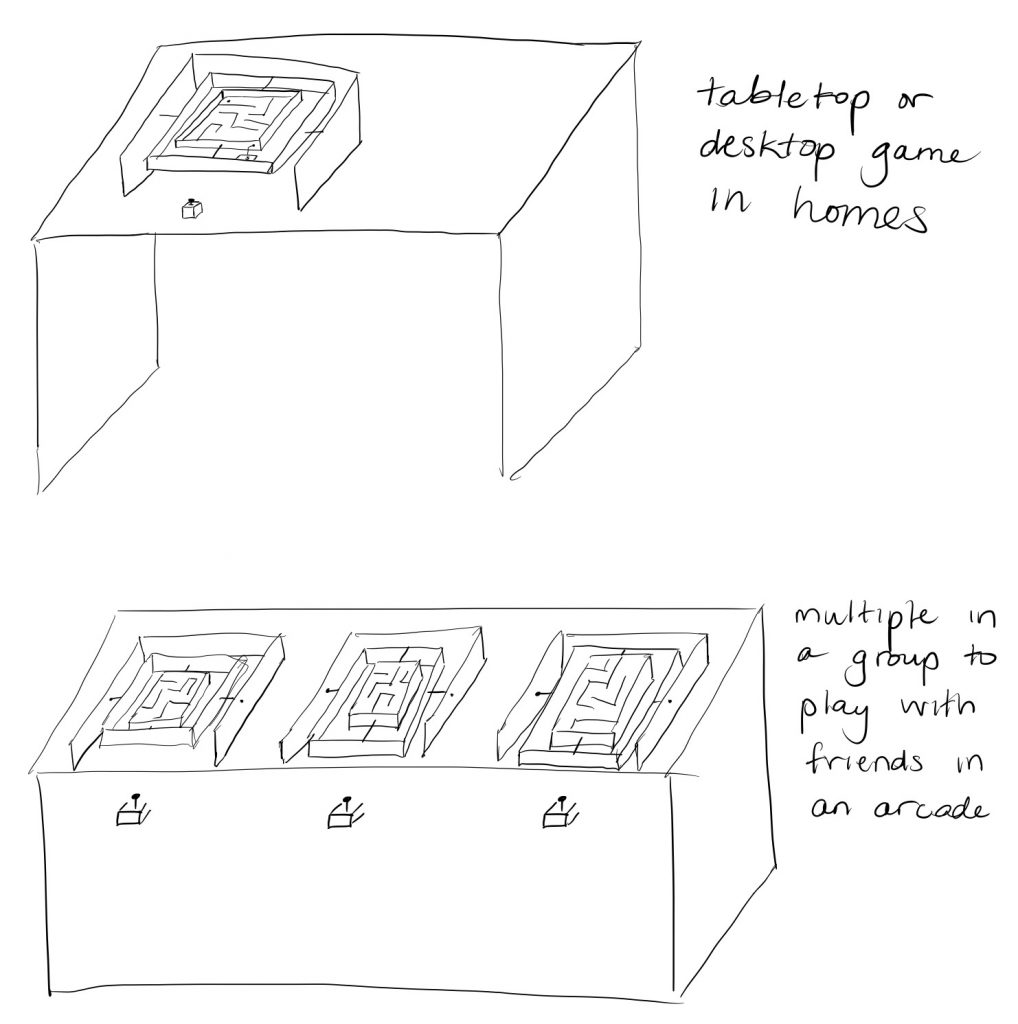Overview
Our goal is to create a maze type game in which the tilt of the board is controlled by a single-player joystick. The player’s goal is to navigate a marble through the maze to the finish. The maze will consist of stationary walls and rotating walls which are rotated by activating push-buttons within the maze to make the task more interesting and challenging. We imagine this game to be placed in an arcade-like setting or in homes as a tabletop game.
A user would come to play this game when they want to have fun or need a break from doing work. To play the game, the player uses the joystick to navigate the ball through the maze. The user discovers which push-buttons help them get past obstacles and navigate the maze. Hopefully, they remember the satisfactory feeling of completing the maze. The maze should actively engage and interact with the audience. For kids, mazes are a fun way to work on problem solving as well as patience. Success is based on the enjoyment of the user. Since this is a toy or game, the most important factor is that the player enjoys playing the game and wants to come back and play it again.
Technical Details
The wooden maze would be controlled on two axes. Each axis is controlled by a servo motor in a gimbal system. The servos would control a tie rod linkage that rotates the playing board. The outer servo linkage rotates an outer frame and an inner servo linkage (attached to the outer frame) rotates the maze on the other axis. Shafts and bearings will be used to support the rotation (See Drawings).
The main materials would be plywood and/or cardboard. The box should be light enough to be effectively controlled by the servos, so we will be laser cutting the frame and walls of the maze. The structure would consist of two boxes, an inner frame that rotates around the y-axis and an outer frame that rotates about the x-axis. The whole system would be raised slightly above a base such that it is free to tilt enough to cause the marble to roll.
In addition to the servos controlling the board movement, other servos will act as obstacles within the maze. These servos will rotate between two angles as a certain pushbutton is activated by the marble within the maze.
The maze would be elevated such that the circuitry can be placed in a wooden, fence-like structure below it. The joystick the user interacts with would be in a small wooden casing to prevent the user from being irritated by the soldered pins on the bottom of the module
For software, the joystick control would have to be smoothened algorithmically to prevent sharp, bumpy movement of the board. Certain limits/rails would also have to be implemented in software to prevent servos from turning the board too much in a certain direction.
Drawings



Leave a Reply
You must be logged in to post a comment.